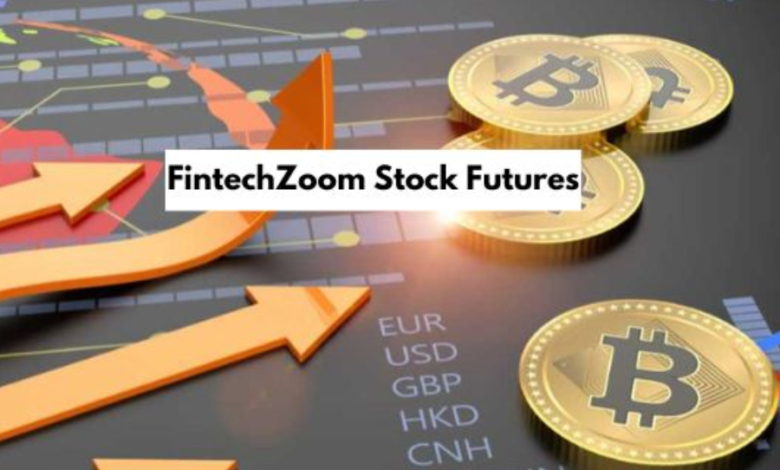Exploring the Advantages of FintechZoom Stock Futures: What You Need to Know

Exploring FintechZoom Stock Futures: A Comprehensive Investor’s Guide
In today’s ever-evolving financial landscape, stock markets are continually adapting, introducing new tools and platforms to support investors.FintechZoom Stock Futures out in this arena, particularly in the realm of stock futures. This article delves into.FintechZoom Stock Futures futures, shedding light on what they are, how they work, and why they matter in the world of finance.
The Journey of Stock Futures: From Ancient Traditions to Modern Exchanges
Early Beginnings and Historical Practices
The concept of stock futures has a .FintechZoom Stock Futures rich history that dates back to the 17th century. Japanese rice merchants were among the first to use early forms of futures contracts to navigate price fluctuations. This rudimentary practice laid the groundwork for what would become a sophisticated financial instrument. It wasn’t until the 19th century, however, that the modern era of futures trading began with the establishment of the Chicago Board of Trade (CBOT), marking a significant evolution in how futures contracts were handled.
Transformations in the 20th Century
The 20th century brought dramatic changes to the world of futures trading. The rise of electronic trading platforms revolutionized the industry, making trading faster, more efficient, and accessible to a broader audience. This .FintechZoom Stock Futures era also saw the global expansion of futures markets, coupled with key regulatory reforms and the development of innovative financial instruments, which collectively reshaped the futures trading landscape into what we recognize today.
Decoding Stock Futures: Essential Characteristics and Applications
What Are Stock Futures?
Stock futures are financial agreements where the buyer agrees to purchase, and the seller agrees to sell, a specific stock at a predetermined price on a set future date. These contracts are standardized and traded on.FintechZoom Stock Futures , serving as a valuable tool for investors to manage risk or speculate on future stock price movements.
Key Characteristics of Stock Futures
- Standardization: Stock futures come with uniform terms, including details about the stock quantity, quality, and delivery schedule, making them easy to trade on futures exchanges.
- Leverage: They allow investors to control a significant position in stocks with a relatively small initial investment, amplifying .FintechZoom Stock Futures both potential returns and risks.
- Hedging: Investors use stock futures to shield their portfolios from potential losses by locking in prices in advance, providing a safety net against market fluctuations.
- Speculation: Traders often use stock futures to bet on future price movements, aiming to capitalize on anticipated changes in.FintechZoom Stock Futures stock prices for profit.
How FintechZoom is Shaping the Future of Stock Futures Trading
Why FintechZoom Matters
.FintechZoom Stock Futures emerged as a significant .FintechZoom Stock Futures player in the world of financial technology, especially in the arena of stock futures trading. The platform offers crucial real-time data, in-depth analytics, and a range of trading tools, making it an invaluable resource for traders at every level of expertise.
Notable Features of FintechZoom
- Real-Time Data: .FintechZoom Stock Futures live updates on stock futures, ensuring traders have access to the latest information and can make timely decisions.
- Advanced Analytics: The platform features powerful analytical tools that help traders analyze market trends and make informed choices.
- User-Friendly Interface: Its intuitive design makes FintechZoom easy to navigate, catering to both newcomers and experienced traders.
- Educational Resources: FintechZoom supports its users with a wealth of educational content, including tutorials, webinars, and articles, helping them understand and excel in stock futures trading.
Navigating Stock Futures Trading on FintechZoom
How Stock Futures Trading Works on FintechZoom
On FintechZoom, stock futures trading involves entering into contracts to buy or sell a specified number of shares at a set price on a future date. These contracts are usually settled in cash, meaning that the actual delivery of the stock doesn’t take place. Instead, at expiration, the settlement involves paying or receiving the difference between the contract price and the market price.
Margin Requirements Explained
To trade stock futures, investors must meet margin requirements. The initial margin is the deposit needed to open a futures .FintechZoom Stock Futures position, while the maintenance margin is the minimum amount of equity required to keep the position open. This margin acts as a guarantee that the terms of the contract will be fulfilled.
Types of Orders
- Market Orders: These are executed instantly at the current market price.
- Limit Orders: These are executed only at a specific price or better.
- Stop Orders: These become market orders once a predetermined price level is reached.
Advanced Techniques for Trading Stock Futures on.FintechZoom Stock Futures
Hedging Strategies
Hedging is a technique used to reduce risk by taking an opposing position in the futures market. Here are some effective hedging .FintechZoom Stock Futures methods:
- Protective Puts: This involves buying put options to protect against potential losses in a stock position. It acts as an insurance policy, allowing you to limit downside risk.
- Covered Calls: This strategy involves selling call options while keeping ownership of the underlying stock. It generates additional income .FintechZoom Stock Futures and offers some protection against a decline in the stock’s price.
Spread Trading Strategies
Spread trading entails holding both long and short positions in related futures contracts to profit from the price differences between them. Here are key spread trading strategies:
- Calendar Spreads: This strategy involves trading futures contracts with different expiration dates. It allows traders to capitalize on price movements over time by taking advantage of the changing value of contracts as they approach expiration.
- Inter-Commodity Spreads: This involves trading contracts for different but related commodities or assets. The goal is to benefit from price discrepancies between these related futures, leveraging the price movements of one asset against another.
Expert Tips for Trading Stock Futures with FintechZoom
Mastering Market Trends
Successful stock futures trading relies on understanding and monitoring market trends. FintechZoom Stock Futures comprehensive market analysis and reports, helping traders identify potential opportunities and evaluate risks effectively.
Leveraging Technical Analysis
Technical analysis plays a crucial role in forecasting future price movements by studying price charts and indicators. . FintechZoom offers of technical tools, including moving averages, the relative strength index (RSI), and Bollinger Bands, to aid traders in making well-informed decisions.
Performing Fundamental Analysis
Fundamental analysis involves evaluating a company’s financial health, industry conditions, and overall economic factors. FintechZoom provides access to key financial statements, earnings reports, and economic data, enabling traders to conduct thorough fundamental assessments and make strategic trading choices.
Case Study: John’s Success in Stock Futures Trading with FintechZoom
Background
John, an experienced trader, turned to FintechZoom for his stock futures trading, focusing on the technology sector because of its strong growth prospects.
Strategy
John’s strategy blended technical and fundamental analysis to find the best times to enter and exit trades. He used FintechZoom’s advanced charting tools to analyze price trends and indicators and stayed updated with the latest market news through the platform’s real-time updates.
Navigating Regulatory Compliance in Stock Futures Trading
Key Regulatory Bodies
Several crucial regulatory agencies oversee FintechZoom Stock Futures stock futures trading:
- Securities and Exchange Commission (SEC): Regulates securities markets in the U.S. to ensure transparency and fairness.
- Commodity Futures Trading Commission (CFTC): Oversees the futures and options markets to protect market participants from fraud and abuse.
Adhering to Compliance Standards
Traders must adhere to various regulatory guidelines, including margin requirements, reporting obligations, and anti-fraud measures. Complying FintechZoom Stock Futures with these standards is vital for avoiding penalties and ensuring fair and transparent trading practices.
Conclusion
FintechZoom stock futures offer a powerful tool for traders seeking to manage risk or capitalize on future price movements. By providing real-time data, advanced analytical tools, and educational resources, FintechZoom equips traders with the necessary tools to make informed decisions and navigate the complexities of stock futures trading. However, it is crucial for traders to understand the margin requirements and associated risks, such as leverage risk and market volatility, to effectively utilize these financial contracts. With proper strategy and due diligence, FintechZoom stock futures can be a valuable addition to your trading toolkit, offering opportunities for both hedging and speculation in a dynamic market environment.





